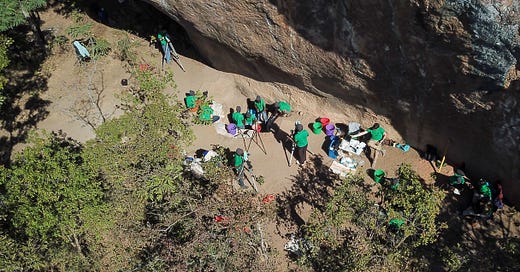Oldest Human DNA from Africa Illuminates Complex Migrations
Ancient DNA f from East Africa reveals migrations from Central Africa 50,000 years ago
A new paper in Nature1 was published today and the study is remarkable on several accounts.
The study analyzed ancient DNA from six individuals, two adults and four infants, buried across three different Subsaharan sites. The most impressive feat is that the authors were able to extract DNA from samples as old as 18,000 years old. This was possible becau…
Keep reading with a 7-day free trial
Subscribe to Anthropology.net to keep reading this post and get 7 days of free access to the full post archives.


